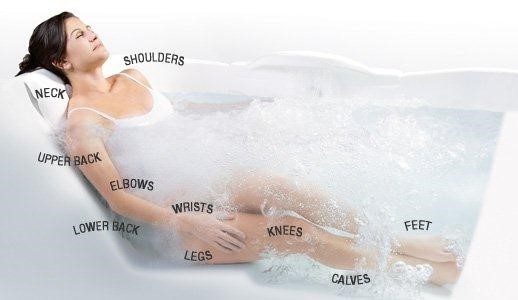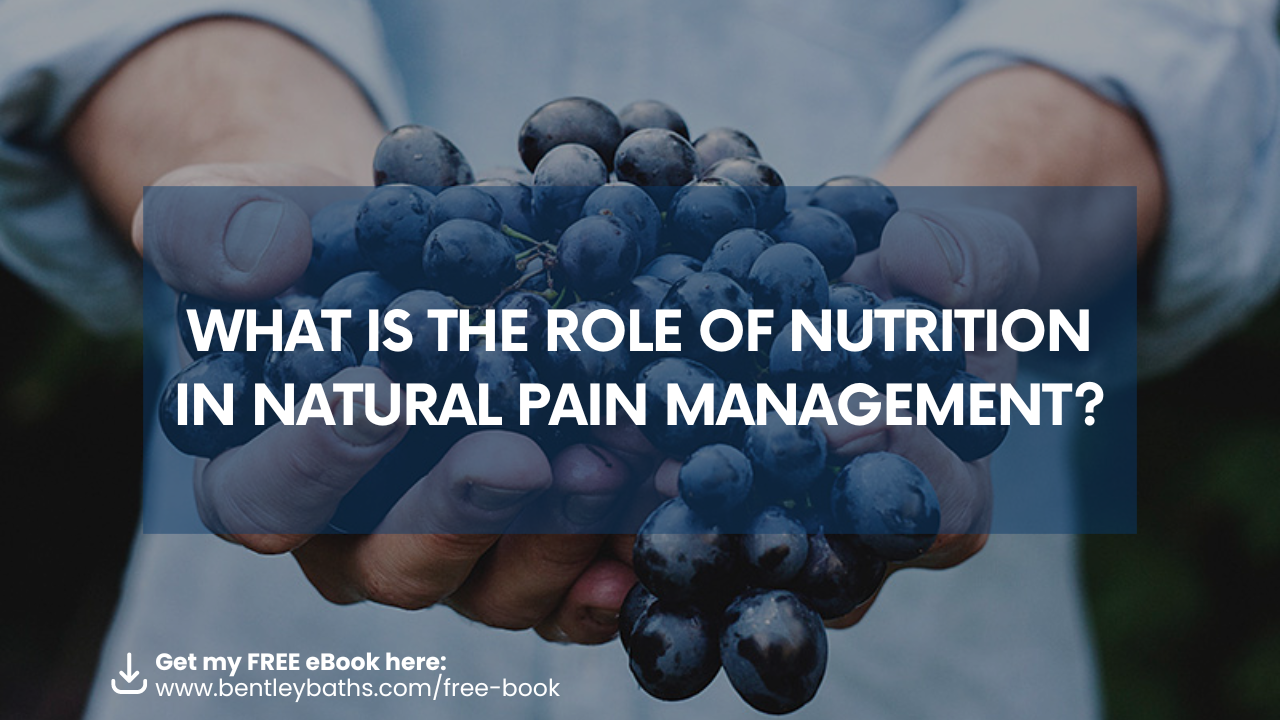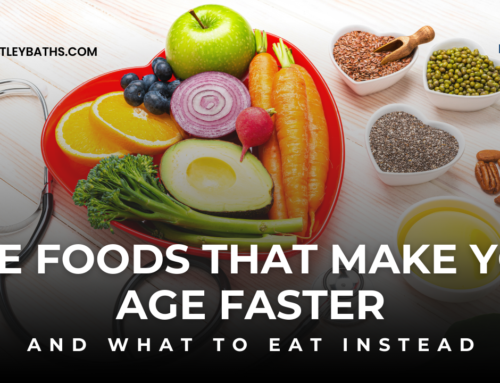
In this blog, I discuss the role of nutrition in natural pain management, and how a Bentley Baths walk-in bathtub with Medical Hydrotherapy® and Rejuvaderm Micro-Oxygenation™ systems is an important element of any nutritionally based pain management plan.
A factor that is often overlooked in managing chronic pain conditions is nutrition.
It is important for everyone to eat a healthy and well-balanced diet, but it is even more important for people suffering from chronic diseases and chronic pain.
These people may also benefit from knowing about specific foods that can either help or hurt their particular pain management situation.
Grandiose Claims Can Lead To Confusion

Of course, as Mark Borigini M.D. writes in Psychology Today, “any and all “pain-lowering” diets you can see on the internet have little human data to confirm their claims.
The studies are small, and the claims of benefit in pain management are sometimes grandiose.”
Confronted with so many potentially positive and negative choices, many physicians and other health care providers suggest avoiding foods thought to contribute to chronic pain for a short period, followed by reintroduction of each food type over time.
Scientists at Michigan State University have found that cherries contain the anti-oxidants known as anthocyanins, which in turn could help reduce inflammation.
Another group at the University of Texas Health Science Center in San Antonio also isolated a significant amount of the hormone melatonin from cherries. Melatonin is found in the pineal gland and is associated with fighting insomnia (more sleep generally results in less pain).
Researchers at the University of Pittsburgh found that patients with neck or back pain who took a daily dose of the omega-3 free fatty acids found in fish oil supplements in addition to their non-steroidal anti-inflammatory drug (NSAID) were generally satisfied with the pain-relieving effects.
A majority (59%) of subjects in this study eventually discontinued taking their prescription NSAID, and 60% declared that their overall pain levels had improved. Other studies have found that soy-containing diets suppress chronic neuropathic pain, at least in rats, and so on.
You Ache What You Eat
It is important to remember that only the one who eats is the one who will know whether a given diet improves chronic pain.
There is some hard science available for those seeking help in what they eat: foods that may help control chronic pain in conditions such as fibromyalgia and rheumatoid arthritis include soy, cherries, peaches, oranges, cranberries, kiwi, asparagus, and cauliflower.
In the case of an inflammatory illness such as rheumatoid arthritis, dairy products, chocolate, eggs, meat, wheat, corn, and nuts can actually worsen inflammation and should probably be avoided, at least in large doses.
If a patient is overweight, losing weight can have many beneficial health effects, including improvement of cardiovascular health, pain due to arthritis, fatigue, and blood glucose levels, and lowering of incidence of type 2 diabetes.
Eating a diet that is low in sodium can help lower blood pressure and improve cardiovascular health.


Having said all that, a well-balanced diet composed of healthy foods can have many different effects that improve overall health and pain levels.
Conversely, a poor diet can make health problems worse.
Those who have questions about eating a healthy diet should see a nutritionist or dietician, who can help them determine how many calories are appropriate to eat each day and what types of food they should be eating to optimize their health and reduce their pain levels.
But beware of extreme claims about specific foods; having a nutritionally-balanced diet is more important than eating a lot of one type of food.
A special diet is not meant to replace other types of pain treatment, but good nutrition can certainly complement your pain management plan for chronic pain conditions.
Medical Hydrotherapy®, Rejuvaderm Micro-Oxygenation™, and Nutrition
Hydrotherapy is one of history’s most popular medical treatments to provide relief from common ailments like arthritis, diabetes, lower back pain, stress, etc., and as such, it clearly complements nutritional therapy for all sorts of conditions including pain management.
In addition, the unique combination of water and temperature/pressure settings available via our proprietary Medical Hydrotherapy® and Rejuvaderm Micro-Oxygenation® systems, can create whole-body vibrations that aid in the absorption of critical nutrients and help you relax, a crucial element of any pain management regime.

While looking for hydrotherapy tubs for seniors, you need to opt for a store that carries quality products.
We at Bentley Baths have overarching expertise in bathtub making, especially when it comes to providing walk-in tubs for the elderly.
We have a wide range of bathtubs for hydrotherapy sessions, which you can install in your bathing spaces. Having adequate knowledge about the special needs of the elderly, we can help you take an informed decision when you choose our product.
At Bentley Baths we are justifiably proud of our products, including Whole Body Vibration Therapy and our proprietary aging-in-place systems such as Medical Hydrotherapy® and Rejuvaderm Micro-Oxygenation™.
If you need help staying in your own home and the design and layout of your bathroom are what’s preventing you from doing that, doesn’t it make sense to purchase and install that walk-in bathtub now?
For more information about this and all of our other products, please don’t hesitate to call us at 303-388-8887 or email me personally at George@BentleyBaths.com.
Stay tuned for the next installment of the Bentley Baths blog, in which I continue the discussion of cutting-edge techniques that are used to help rejuvenate both body and mind as we age.













